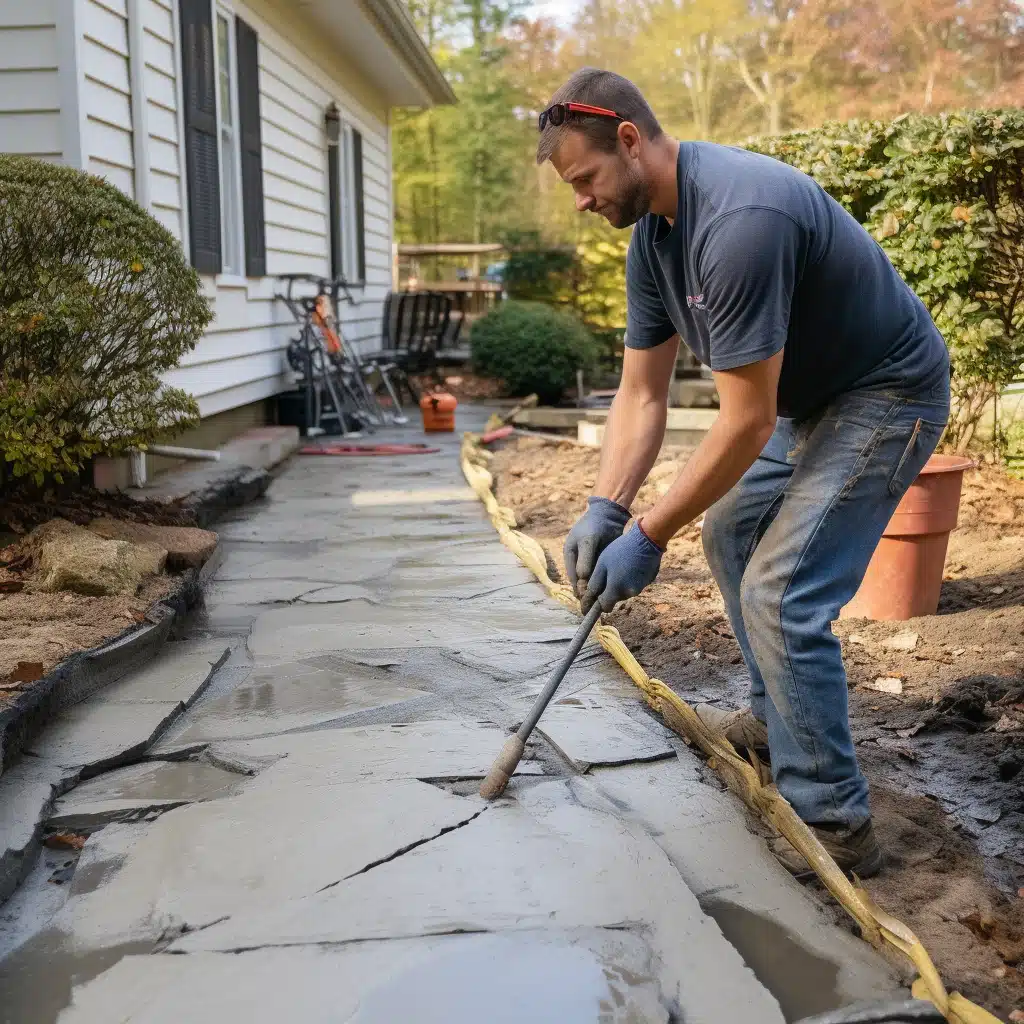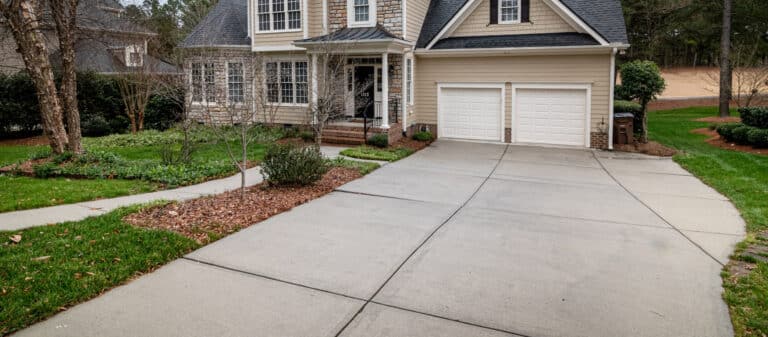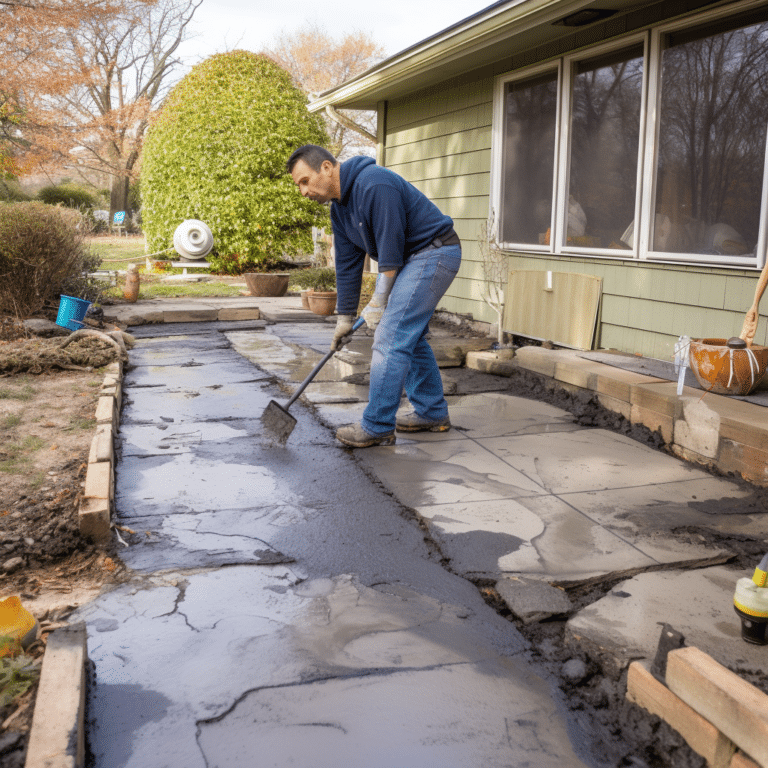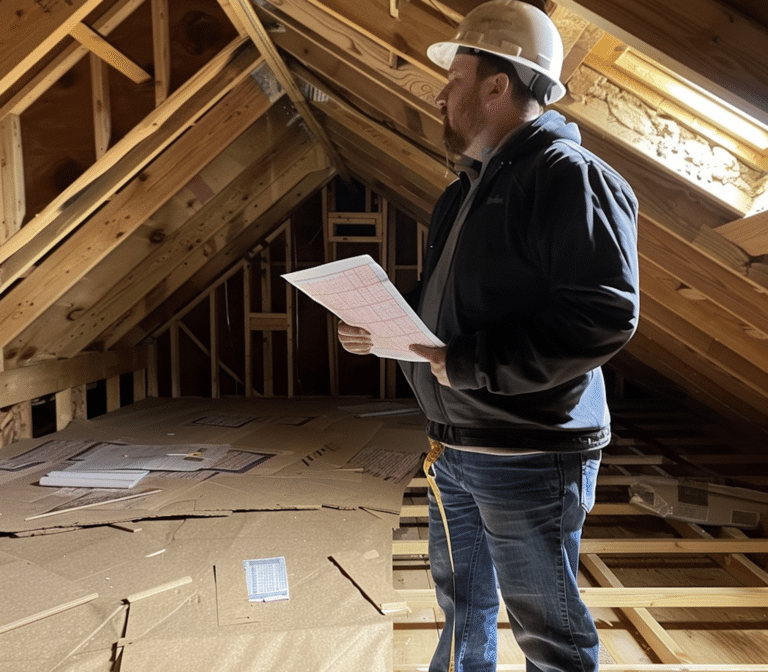Modern concrete may not technically fall under the category of planned obsolescence, but all concrete built today will fail at some point.
Between elemental exposure and wear from plants and animals underneath its surface, concrete tends to form large voids over time that threaten its structural integrity. Once voids become large enough, large concrete slab structures can crack or collapse altogether.
One cost-effective and long-lasting solution to prevent total concrete failure is to fill the void using a specialized mixture. Void filling, often referred to as concrete lifting or leveling, helps repair uneven concrete surfaces and restore concrete back to its original structure.
Find out how void filling works and which solution is right for you.
What Causes Voids Underneath Concrete?
Understanding the root causes of voids beneath concrete is important for effective void filling solutions. Several factors contribute to this issue, including:
- Soil Erosion: Over time, soil beneath concrete surfaces can erode due to water runoff or other environmental factors, creating voids.
- Settling: The natural settling of the ground can result in voids forming beneath concrete, leading to sinking or uneven surfaces.
- Leakage or Water Intrusion: Water infiltration can wash away the soil beneath concrete, creating voids and compromising its stability.
- Pest Activity: Burrowing pests, like rodents, can create voids as they tunnel beneath concrete surfaces.
Benefits of Void Filling
1. Structural Stability
Void filling is not a quick band-aid fix; it restores the structural stability of your concrete surfaces, preventing further sinking, settling, or cracking. In turn, void filling can stabilize a concrete slab for decades.
2. Cost-Effective
Compared to the extensive and costly process of removing and replacing concrete, void filling is a cost-effective solution that saves both time and money.
3. Quick and Efficient
Void filling methods, especially polyurethane lifting, offer quick and efficient results. Whereas concrete replacement could take days, void filling is typically completed in a matter of hours, minimizing disruption to your daily activities.
4. Long-lasting Results
Properly executed void filling provides long-lasting results, ensuring that your concrete surfaces remain stable and even for an extended period. By some estimates, void filling can extend the lifespan of a concrete slab by 30 years or more.
5. Improved Aesthetics and Home Value
Addressing voids and unevenness enhances the aesthetics of your property, boosting curb appeal and overall visual appeal. This leads to higher property values and home equity.
6. Eco-Friendly
Polyurethane foam used in void filling is environmentally friendly and non-toxic, making it a sustainable choice for concrete repair.
7. Improved Safety
Void filling makes concrete sidewalks and driveways safer, reducing the risk of accident or injury.
Types of Void Filling Services
The type of material you choose to fill your concrete voids will determine its cost and long-term integrity. While there are many types of specialized materials used to fill concrete voids, the two most common include mudjacking and polyurethane foam.
1. Polyurethane Lifting
Polyurethane lifting, also known as foam jacking or polyjacking, is a modern and popular void-filling method. Polyjacking involves injecting polyurethane foam into the voids beneath the concrete. This foam expands on contact and fills the void in little time.
Polyjacking is highly durable and incredibly cost-effective.
2. Mudjacking
Mudjacking, or slab jacking, is a traditional void-filling method that uses a mixture of mud, water, and cement (grout). This mixture is pumped into the voids beneath the concrete, lifting it and providing stability. While effective, mudjacking takes longer to install and is not considered as stable as polyurethane foam.
Which Void Filling Solution Is Right for Me?
Choosing the right void-filling solution will mostly depend on your budget. While mudjacking is typically less expensive, polyjacking is considered more durable and less invasive to concrete.
Polyjacking utilizes a smaller drill hole and takes less time to complete. In some instances, mudjacking is recommended for projects that require a lot of weight to stabilize. However, both solutions provide suitable concrete leveling and repair results, and deciding on one or another really depends on your budget and long-term goals.
Either way, investing in a void-filling solution is a must for any homeowner trying to maintain a clean and safe property.
Talk to a company specializing in void filling, such as EnergySmart, to determine which solution is right for you.
Contact EnergySmart today for a free, no-obligation quote.
FAQs: Void Filling
How do I know if void filling is necessary for my concrete surfaces?
Signs like cracks, sinking, or unevenness are indicators of potential voids beneath the concrete. A professional assessment can confirm the need for void filling.
Is polyurethane lifting suitable for all types of concrete surfaces?
Yes, polyurethane lifting is versatile and can be used on various concrete surfaces, including driveways, sidewalks, patios, and even foundation slabs.
How long does the void filling process take?
The duration depends on factors like the size of the project and the void filling method used. Polyurethane lifting is typically quicker compared to traditional mudjacking.
Can void filling prevent future void formation?
While void filling addresses existing issues, it’s essential to address the root causes to minimize the risk of future void formation. Proper drainage and soil management are key preventive measures.
Are there any long-term maintenance requirements after void filling?
Once void filling is complete, there are typically no extensive maintenance requirements. However, regular inspections of the concrete surfaces can help identify and address any potential issues early on.










